The PTL-02 Assault Gun debuted in 2001, as self-propelled assault gun (tank destroyer) based on the WZ-551 chassis. Equipped with the Type 86 100 mm high velocity smoothbore cannon with a muzzle brake, around 250 were delivered for the Chinese mechanised infantry formations. The 6x6 vehicle is no different from the base APC apart the turret, with slightly inferior performances, albeit the high pressure cannon could fire a range of APFSDS, APDS and other rounds against tanks. I attracted attention, leading to the design of the export model WMA-301, with a new turret and 105 mm cannon, NATO-compatible, widely sold in Africa, but with Myanmar as the second largest user after china.
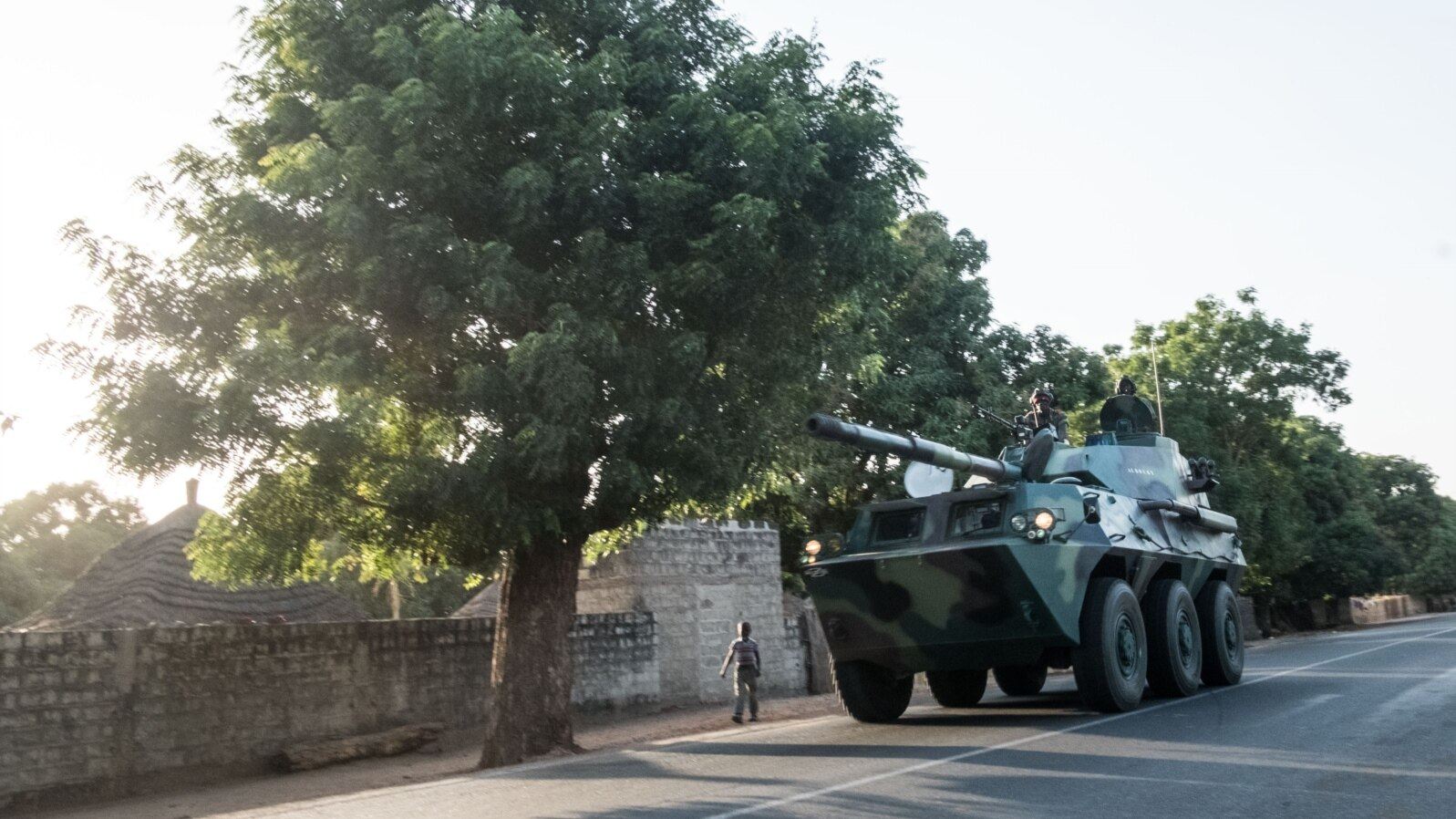
Senegalese WMA-301s near the Senegalese border (cc)
The PTL-02 is a Chinese-made light wheeled assault gun or tank destroyer developed by NORINCO. It was introduced in the early 2000s from the WZ-551 (ZSL-92) 6×6 chassis, and conceived post–Gulf War as China looked to replicate rapid-deployment wheeled fire support platforms similar to the French AMX-10RC. It was Certified in 2001 and publicly showcased in 2009. Development continued into limited production from around 2002–2005. Though sometimes labeled a tank destroyer, most sources classify it more accurately as a fire-support vehicle or assault gun, better suited for engaging light armored vehicles, bunkers, and static targets rather than heavy MBTs. Indeed its 100 mm low-recoil smoothbore, based on the Type 86 anti-tank gun was capable of firing APFSDS, HEAT, and HE rounds but on limited velocity and with 30 rounds onboard.
Analysts also pointed out it was conceptually similar to the Russian 2S23 “Nona-SVK” with some hints to the 2S9 Nona mounted on a BTR-80 chassis, three of which China purchased for evaluation. The Chinese system features a longer barreled weapon mounted on the Type 92 variant of the WZ551 armored personnel carrier.
Seeing the potential in a resticted market, Chinese immediately proposed an export Variant called the WMA-301, fitted with a 105 mm rifled gun, likely L7-derived, making it coppatible with NATO-standard ammunition, for exports to Cameroon, Chad, Djibouti, and Myanmar, and used locally as a fast-response tank hunter. It s not known if the basuc Type 37A (or 37B) light-spot FCS with night vision and laser rangefinder was updated or replace for this variant. However instead of much heavier MBT, its wheeled chassis and lack of stabilization made it far less effective and less accurate.
Its powerplant is a robust German-designed Deutz BF8L413F turbocharged, air-cooled diesel engine producing 320 hp for 80–85 km/h on road, range 600 km and a protection stopping 12.7 mm machine-gun fire and shell fragments but also took heavy to have any amphibious capability and no rear propellers. The 4-5 crew members were NBC protected with an air conditioning and fire suppression systems plus smoke dischargers for protection. Zimbabwe was the only one which 105 mm gun was provided with gun-launched missiles. Combat use included Myanmar and African local conflicts.
In short, the PTL-02 exemplifies a lightweight, fast, and cost-effective fire-support vehicle—optimized for expeditionary roles and rapid deployment rather than head-to-head MBT combat. Its export variant, with enhanced firepower and weapon compatibility, underscores its adaptability for foreign missions and varied battlefield roles, being the "Centauro of the poor" as it is more comparable to the latter than the French AMX-10RC.
This was a long process started in the mid-1980s already, when NORINCO tested the marriage between the WZ551 wheeled armoured vehicle with the brand new 100mm smoothbore gun, derived from the Type 86 towed antitank. The idea was to have a high-mobility and cost effective self-propelled artillery system that could organically join another series of wheeled armoured combat vehicles, resulting in the Type 87 assault gun.
Protection is partly inherited from the base WZ 551 APC, with the same armoured hull presenting sloped sides and front, with a beak and bullet-proof windows under armoured shitters. The Rolled Homogeneous Armur in high military grade steel is enough all around (c10 mm) to protect thanks to its angles, from 12.7mm or 0.5 inch calibre weapons, all round. Crew members are also protected by their collective NBC protection system, complete with overpressure (thus an air conditioner) and full sealing. There is also an internal spall liner, and an automatic fire suppressing system with sprinklers and sensors in the rear engine compartment (plus a fireproof bulkhead), combat compartment, and driver's compartment and transmission forward. For active protection two sets of four electrically discharged smoke dischargers are installed on the two forward-side faces of the of the turret.
The vehicle is powered by a German-designed BF8L413F diesel engine, which is a 4-stroke, 8-cylinder and turbo-charged and air-cooled unit. It is rated for 235kW or 320hp at 2,500r/min, providing plenty of torque. Note this is the same as the Deutz TD 8 cyl. 320 hp sported by the original WZ 551 which bears questions about the performances losses due to the extra weight of the turret. Officially, the PTL-02 is flagged as a 19 tonnes vehicle, versus 14.9 tonnes fully loaded for the WZ 551. The power to weight ratio is 16.82 hp/ton.
Thise engine is linked to a German-origin mechanical gear box, with 9 forward and 1 reverse gears. There is power assisted steering as well as independent suspension (hydrosprings), and the usual central inflating system as standard to adapt to all terrains. The PTL-02's main difference with the base WZ-551 is its lack of amphibious capacity, lacking the two rear propellers and the nose trim vane as well. It can still ford one meter of water without prep. Performances are still quite honorable at 85 kph on road. Fuel capacity is 400 liters, but due to the burden of the turret, range fell to 600 km. In field tests, the PTL-02 was proven capable of climbing a 60% gradient, 30% side slope, 55 cm vertical obstacle, gap a 1,2 meters wide trench, and 360° turns in 9 meters. Being an assault gun, the large turret houses a 100mm high-pressure, low-recoil smoothbore gun. It was developed in China from the Type 86 towed 100mm antitank gun. The latter can fire the Type 73 armour piercing fin stabilised discarding sabot (APFSDS) to compensate for the lower recoil, a solid arrow flying at 1,610 m/s with a tungsten core to defeat allegely up to 100mm of sloped armour at 1000m, max range 1700m.
Being an assault gun, the large turret houses a 100mm high-pressure, low-recoil smoothbore gun. It was developed in China from the Type 86 towed 100mm antitank gun. The latter can fire the Type 73 armour piercing fin stabilised discarding sabot (APFSDS) to compensate for the lower recoil, a solid arrow flying at 1,610 m/s with a tungsten core to defeat allegely up to 100mm of sloped armour at 1000m, max range 1700m.
It comes with the other rounds in the Type 86 inventory, the APDS Type 73 (tungsten penetrator, muzzle velocity 1,500 m/s, range of 1,700 m), HEAT Type 73 (fin-stabilised projectile, muzzle velocity 1,010 m/s), APFSDS Type 73 wit a ratio 13.3:1 and max range 1,730 m, HE Type 73 fin-stabilised shell (muzzle velocity 900 m/s, range of 13,700 m) for fire support. However the choice is limited due to an internal capacity of 30 rounds. It uses a good old fashioned FCS light spot fire control system, with IR night vision, laser rangefinder.

In addition the vehicle has a roof mounted (commander cupola) 12.7mm/50-calibre anti-aircraft machine-gun with a range of 2,000m and 480 rounds. There is also the 7.62mm co-axial machinegun with 800 rounds including tracers to assist the main gun for targeting backup. The eight smoke grenade launchers are also compatible if needed with anti-personal grenades for close quarter defence. Plus the crew had their own pistols and small arms.

WMA-301, Djibouti Army
 250 declared/estimated PTL-02 with the PLA
250 declared/estimated PTL-02 with the PLA
 4 vehicles (10 initially), WMA-301
4 vehicles (10 initially), WMA-301
 6 WMA-301 and a command vehicle.
6 WMA-301 and a command vehicle.
 12 WMA-301. Some seen in anti-Boko Haram operations
12 WMA-301. Some seen in anti-Boko Haram operations
 30 vehicles, WMA-301
30 vehicles, WMA-301
 From a Single to 3 WMA-301
From a Single to 3 WMA-301
 c3 WMA-301
c3 WMA-301
 Equ. Guinea. Unconfimed WMA-301 (26 WZ-551 delivered)
Equ. Guinea. Unconfimed WMA-301 (26 WZ-551 delivered)
 10 or more WMA-301
10 or more WMA-301
 Allegedly 150 WMA-301 assaulter
Allegedly 150 WMA-301 assaulter
 10 vehicles, inc. WMA-301 assaulter
10 vehicles, inc. WMA-301 assaulter
 12 vehicles with a single command WZ551
12 vehicles with a single command WZ551
 8 vehicles (also eight ZSL-92A and 8 ZSL-92B)
8 vehicles (also eight ZSL-92A and 8 ZSL-92B)
Foreworld

Senegalese WMA-301s near the Senegalese border (cc)
The PTL-02 is a Chinese-made light wheeled assault gun or tank destroyer developed by NORINCO. It was introduced in the early 2000s from the WZ-551 (ZSL-92) 6×6 chassis, and conceived post–Gulf War as China looked to replicate rapid-deployment wheeled fire support platforms similar to the French AMX-10RC. It was Certified in 2001 and publicly showcased in 2009. Development continued into limited production from around 2002–2005. Though sometimes labeled a tank destroyer, most sources classify it more accurately as a fire-support vehicle or assault gun, better suited for engaging light armored vehicles, bunkers, and static targets rather than heavy MBTs. Indeed its 100 mm low-recoil smoothbore, based on the Type 86 anti-tank gun was capable of firing APFSDS, HEAT, and HE rounds but on limited velocity and with 30 rounds onboard.
Analysts also pointed out it was conceptually similar to the Russian 2S23 “Nona-SVK” with some hints to the 2S9 Nona mounted on a BTR-80 chassis, three of which China purchased for evaluation. The Chinese system features a longer barreled weapon mounted on the Type 92 variant of the WZ551 armored personnel carrier.
Seeing the potential in a resticted market, Chinese immediately proposed an export Variant called the WMA-301, fitted with a 105 mm rifled gun, likely L7-derived, making it coppatible with NATO-standard ammunition, for exports to Cameroon, Chad, Djibouti, and Myanmar, and used locally as a fast-response tank hunter. It s not known if the basuc Type 37A (or 37B) light-spot FCS with night vision and laser rangefinder was updated or replace for this variant. However instead of much heavier MBT, its wheeled chassis and lack of stabilization made it far less effective and less accurate.
Its powerplant is a robust German-designed Deutz BF8L413F turbocharged, air-cooled diesel engine producing 320 hp for 80–85 km/h on road, range 600 km and a protection stopping 12.7 mm machine-gun fire and shell fragments but also took heavy to have any amphibious capability and no rear propellers. The 4-5 crew members were NBC protected with an air conditioning and fire suppression systems plus smoke dischargers for protection. Zimbabwe was the only one which 105 mm gun was provided with gun-launched missiles. Combat use included Myanmar and African local conflicts.
In short, the PTL-02 exemplifies a lightweight, fast, and cost-effective fire-support vehicle—optimized for expeditionary roles and rapid deployment rather than head-to-head MBT combat. Its export variant, with enhanced firepower and weapon compatibility, underscores its adaptability for foreign missions and varied battlefield roles, being the "Centauro of the poor" as it is more comparable to the latter than the French AMX-10RC.
Design of the PTL-02
Development
The roots of the program are found in the WZ-551, at the time in the 1980s preceded by the Type 90 APC, a 6x6 prototype designated the ZSL-90, largely inspired by the French VAB. It led later to the mass production of the Type 92 IFV using a a ZPT-90 gun, copy of the French GIAT 25mm and the Type 92 APC, both 6x6 chassis. This reliable platform was mass produced in the 1990s and declined into other specialized variants, until an reassessment of the needs of the PLA after the Gulf War led to the study of a vehicle based on the Type 92 chasis that could perform the same role as the French AMX-10RC used by French Cavalry in Operation Daguet on the flank of the coalition advance, making a very fast weep deep into Iraqi territory. At the time, China saw France at its major exporter, but Chinese authorities never purchased the AMX-10RC, preferring their own development by lowering costs, looking at existing platforms.This was a long process started in the mid-1980s already, when NORINCO tested the marriage between the WZ551 wheeled armoured vehicle with the brand new 100mm smoothbore gun, derived from the Type 86 towed antitank. The idea was to have a high-mobility and cost effective self-propelled artillery system that could organically join another series of wheeled armoured combat vehicles, resulting in the Type 87 assault gun.
PTL-87 Assault Gun
This prototype assault vehicle was developed in 1980s, based on modified WZ-551 chassis. Four more variants were developed and marketed by Norinco as the BK series but with a BK-1970 105 mm gun, and the the BK-1990 105 mm this time based on a 8x8 chassis, as well as the modified BK-1990 with a 120 mm gun, a and modified BK-1990 with a 122 mm howitzer. None entered production. Based on this experience, other models were tested.PTL-97 Assault Gun
It was based on the BK-1770 100 mm 6x6 assault gun prototype, featuring the Type 86 100 mm high velocity smoothbore cannon. It entered into limited production in 1997 for field testing, never exported, and later kept for training. Its role was as a field test vehicle, ironing out defects that led to the next step, the PTL-02.PTL-02 Assault Gun
Mixing elements from the Type 87 assault gun and PTL-97 a modified variant was created known as PTL02 or "Type 02" as it was introduced in 2002/03. Batch production is estimated by most experts to have been taken place in limited numbers from 2002-2003 then ramped up between 2004 and 2005, to reach an estimated 250 vehicles, less the pre-series and export vehicles, estimated to 24 vehicles, making for a grand total of 274 if estimates are exact.PLL-05 Self-Propelled Gun-Mortar
This ultimate evolution of the modifiedl 6x6 chassis to sport a large gun turret was exploited into an organic self-propelled 120mm gun-mortar making its debut in 2001.Protection a Layout
The PTL-02 is indeed externally based on the WZ551 APC/IFV chassis, but it is very likely the chassis and hull were much strenghtened to bear the weight of a two-man turret, but the main body of the vehicle remained unchanged apart a larger turret installed aft of the roof deck. A brand new two-man turret was installed above, with its weight balanced by the support of the two rear axles. The layout thus comprised the driver compartment in front, powerpack in middle, turret and combat compartment at middle and rear. Sources differs for the crew, some stating five, with a gun commander, loader and gunner, thn co-driver forward. Other goes with just three, with the gun commander doubling as gunner. The vehicle is 8,3 meters long overall, and 2.1 meters up to the hull top, with a 400 mm ground clearance and a wheelbase of 1.90 meter, tracks 2,44 meters on all axles.Protection is partly inherited from the base WZ 551 APC, with the same armoured hull presenting sloped sides and front, with a beak and bullet-proof windows under armoured shitters. The Rolled Homogeneous Armur in high military grade steel is enough all around (c10 mm) to protect thanks to its angles, from 12.7mm or 0.5 inch calibre weapons, all round. Crew members are also protected by their collective NBC protection system, complete with overpressure (thus an air conditioner) and full sealing. There is also an internal spall liner, and an automatic fire suppressing system with sprinklers and sensors in the rear engine compartment (plus a fireproof bulkhead), combat compartment, and driver's compartment and transmission forward. For active protection two sets of four electrically discharged smoke dischargers are installed on the two forward-side faces of the of the turret.
Propulsion & Mobility of the PTL-02

The vehicle is powered by a German-designed BF8L413F diesel engine, which is a 4-stroke, 8-cylinder and turbo-charged and air-cooled unit. It is rated for 235kW or 320hp at 2,500r/min, providing plenty of torque. Note this is the same as the Deutz TD 8 cyl. 320 hp sported by the original WZ 551 which bears questions about the performances losses due to the extra weight of the turret. Officially, the PTL-02 is flagged as a 19 tonnes vehicle, versus 14.9 tonnes fully loaded for the WZ 551. The power to weight ratio is 16.82 hp/ton.
Thise engine is linked to a German-origin mechanical gear box, with 9 forward and 1 reverse gears. There is power assisted steering as well as independent suspension (hydrosprings), and the usual central inflating system as standard to adapt to all terrains. The PTL-02's main difference with the base WZ-551 is its lack of amphibious capacity, lacking the two rear propellers and the nose trim vane as well. It can still ford one meter of water without prep. Performances are still quite honorable at 85 kph on road. Fuel capacity is 400 liters, but due to the burden of the turret, range fell to 600 km. In field tests, the PTL-02 was proven capable of climbing a 60% gradient, 30% side slope, 55 cm vertical obstacle, gap a 1,2 meters wide trench, and 360° turns in 9 meters.
Armament
 Being an assault gun, the large turret houses a 100mm high-pressure, low-recoil smoothbore gun. It was developed in China from the Type 86 towed 100mm antitank gun. The latter can fire the Type 73 armour piercing fin stabilised discarding sabot (APFSDS) to compensate for the lower recoil, a solid arrow flying at 1,610 m/s with a tungsten core to defeat allegely up to 100mm of sloped armour at 1000m, max range 1700m.
Being an assault gun, the large turret houses a 100mm high-pressure, low-recoil smoothbore gun. It was developed in China from the Type 86 towed 100mm antitank gun. The latter can fire the Type 73 armour piercing fin stabilised discarding sabot (APFSDS) to compensate for the lower recoil, a solid arrow flying at 1,610 m/s with a tungsten core to defeat allegely up to 100mm of sloped armour at 1000m, max range 1700m.
It comes with the other rounds in the Type 86 inventory, the APDS Type 73 (tungsten penetrator, muzzle velocity 1,500 m/s, range of 1,700 m), HEAT Type 73 (fin-stabilised projectile, muzzle velocity 1,010 m/s), APFSDS Type 73 wit a ratio 13.3:1 and max range 1,730 m, HE Type 73 fin-stabilised shell (muzzle velocity 900 m/s, range of 13,700 m) for fire support. However the choice is limited due to an internal capacity of 30 rounds. It uses a good old fashioned FCS light spot fire control system, with IR night vision, laser rangefinder.

In addition the vehicle has a roof mounted (commander cupola) 12.7mm/50-calibre anti-aircraft machine-gun with a range of 2,000m and 480 rounds. There is also the 7.62mm co-axial machinegun with 800 rounds including tracers to assist the main gun for targeting backup. The eight smoke grenade launchers are also compatible if needed with anti-personal grenades for close quarter defence. Plus the crew had their own pistols and small arms.
WMA-301
The changes with the export variant manufactured by NORINCO Factory 256 in Chongqing, are the redesigned turret wih a distinctive "beak" (like the ZTZ96A for its arrowhead shape) and NATO compatible greater velocity 105 m gun.PTL-02 specifications | |
| Dimensions | 8,3 m oa x 2,86 x 3,15m |
| Weight | 19 tonnes |
| Crew | 3-5, see notes |
| Propulsion | Deutz BF8L413F 8-cyl. Turbodiesel AC 235kW (320hp) |
| Suspension | 6x6 hydrospring, torsion bars |
| Speed | 85 kph (Power-to-weight ratio 16.82 hp/t) |
| Range | 600 km |
| Armament | 100 mm HP LC, 12.7mm/50 AA, 7.62mm coax. MGs |
| Armor | 10mm steel RHA, sloped. |
| Production | c274 inc. exports |
Users

WMA-301, Djibouti Army
 250 declared/estimated PTL-02 with the PLA
250 declared/estimated PTL-02 with the PLA 4 vehicles (10 initially), WMA-301
4 vehicles (10 initially), WMA-301 6 WMA-301 and a command vehicle.
6 WMA-301 and a command vehicle. 12 WMA-301. Some seen in anti-Boko Haram operations
12 WMA-301. Some seen in anti-Boko Haram operations 30 vehicles, WMA-301
30 vehicles, WMA-301 From a Single to 3 WMA-301
From a Single to 3 WMA-301 c3 WMA-301
c3 WMA-301 Equ. Guinea. Unconfimed WMA-301 (26 WZ-551 delivered)
Equ. Guinea. Unconfimed WMA-301 (26 WZ-551 delivered) 10 or more WMA-301
10 or more WMA-301 Allegedly 150 WMA-301 assaulter
Allegedly 150 WMA-301 assaulter 10 vehicles, inc. WMA-301 assaulter
10 vehicles, inc. WMA-301 assaulter 12 vehicles with a single command WZ551
12 vehicles with a single command WZ551 8 vehicles (also eight ZSL-92A and 8 ZSL-92B)
8 vehicles (also eight ZSL-92A and 8 ZSL-92B)Gallery
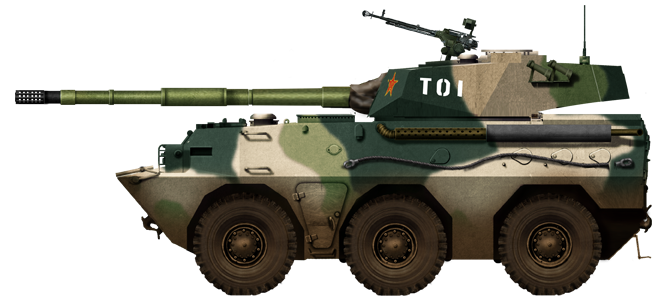
Chinese PTL-02 in the 2000s
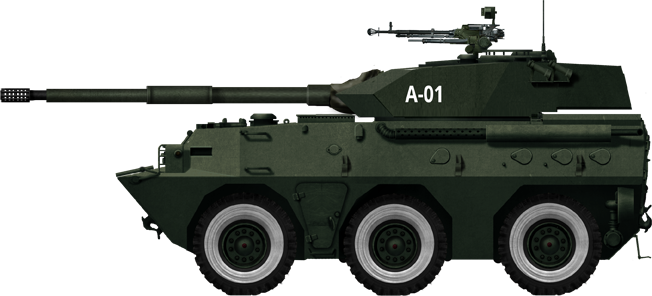
Tanzanian WMA-301

Senegalese WMA-301s near the Senegalese border (cc)
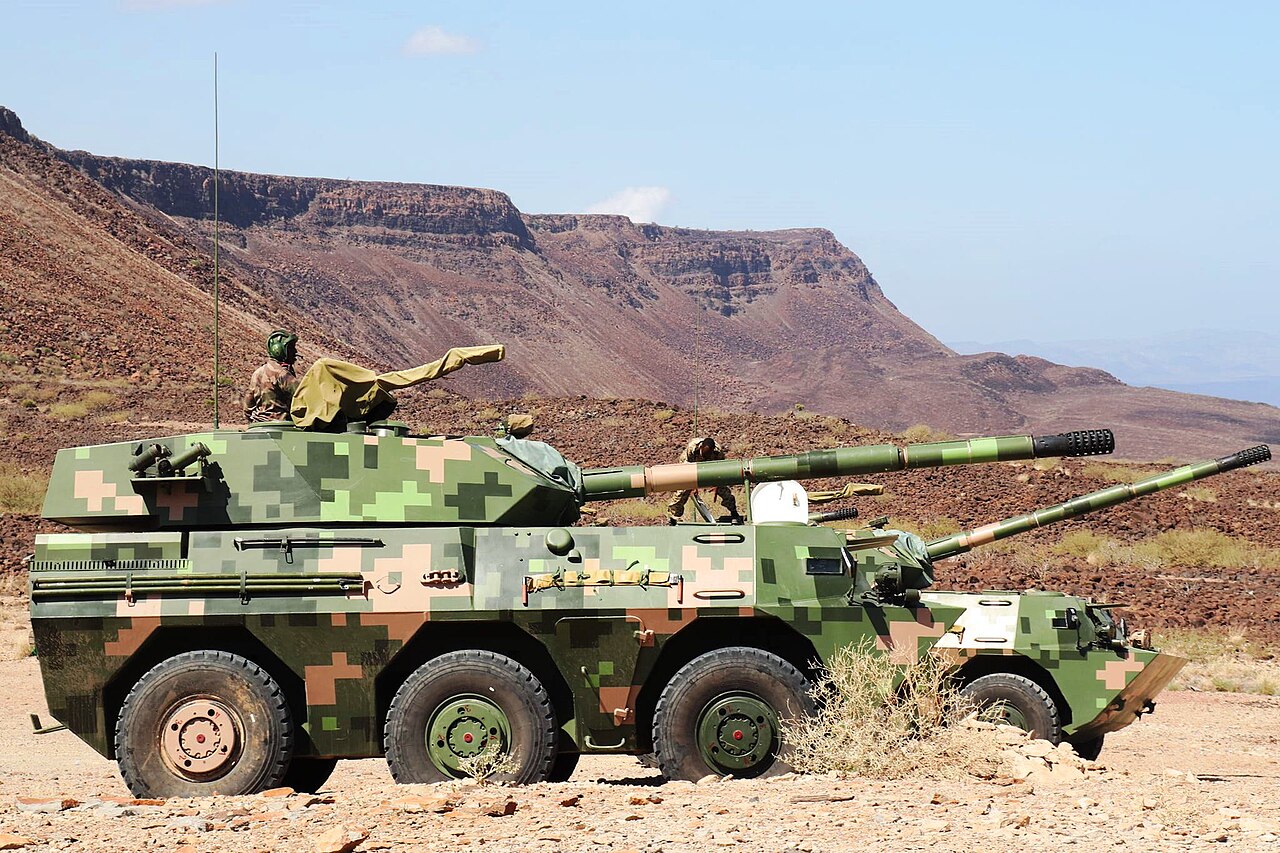
WMA-301 from the Djibouti Army (cc)

In a museum

Note the rear mounted smoke dischargers on this PAL version, crew of 4 visible

Myanmar WMA-301s, the largest user after China

boxart
External Resources
links
army-guide.com/en.topwar.ru
armyrecognition.com
globalsecurity.org
en.wikipedia.org/wiki/WZ-551
armyrecognition.com
tanknutdave.com
Video
3D
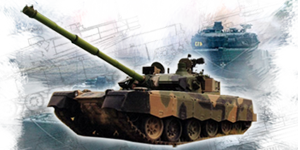
Modern Tanks
Modern MBTs posters

Denel Bagder (2018)
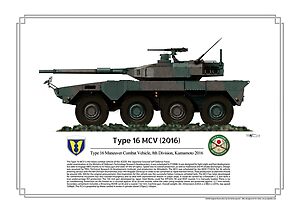
Type 16 MCV (2016)

Gepard 1A2 last rounds 2011

SANDF

Russian AFVs

Main Battle Tanks